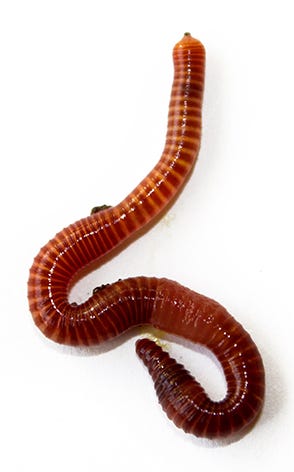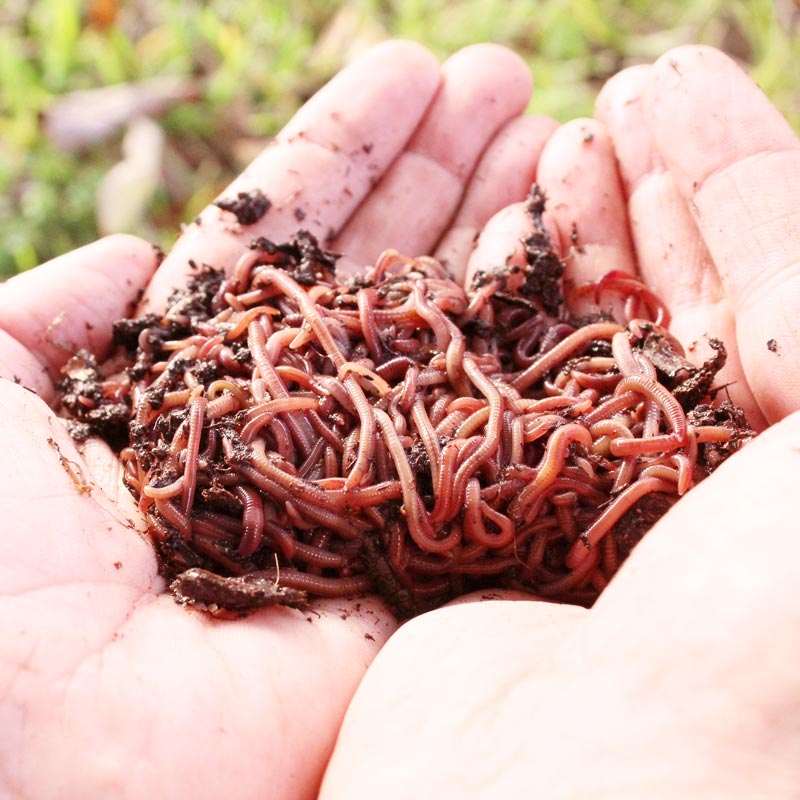Taking Full Advantage Of the Benefits of Red Wiggler Worms: A Comprehensive Handbook for Home Gardeners and Urban Farmers
In the realm of lasting horticulture techniques, red wiggler worms stand as unhonored heroes, silently changing natural waste right into nutrient-rich spreadings that can function wonders for dirt wellness. By discovering the ins and outs of exactly how to successfully care for and make the most of the benefits of red wiggler worms, people can unlock a riches of possibilities for improving the sustainability and productivity of their horticulture endeavors.
Recognizing Red Wiggler Worms
Red Wiggler worms, renowned for their reliable composting capacities, are a types of earthworms widely made use of in vermiculture practices. These worms, clinically referred to as Eisenia fetida, flourish in rotting natural product, making them optimal prospects for composting (Red Wiggler Worms). Red Wigglers are ravenous eaters, efficient in consuming their own weight in organic waste daily. Their digestive system process breaks down raw material right into nutrient-rich spreadings, which are an important resource for enhancing dirt and promoting plant growth.
One key quality of Red Wiggler worms is their reproductive rate. These hermaphroditic creatures have both women and male reproductive body organs, permitting them to reproduce rapidly under favorable conditions. A mature Red Wiggler can generate several children in a short period, guaranteeing a consistent population within a composting system.

Establishing a Worm Bin
When developing a worm container for vermiculture purposes, appropriate prep work and focus to information are important for producing a helpful setting for Red Wiggler worms. Begin by picking a suitable container for your worm bin. This can be a plastic or wooden container with a lid to preserve dampness degrees and protect the worms from light. Guarantee that the container has water drainage openings near the bottom to stop waterlogging.

Area the worm bin in a trendy, dark place away from direct sunlight and severe temperatures. By adhering to these steps, you can establish up a growing worm bin that will efficiently process natural waste into nutrient-rich vermicompost for your garden.
Feeding and Preserving Worms
Guaranteeing a nourishing and balanced diet plan is crucial for the health and wellness and productivity of Red Wiggler worms in a vermiculture system. Red Wigglers are starved eaters, efficient in consuming their own body weight in natural issue daily. To maintain a flourishing worm populace, it is important to give them with a variety of food scraps such as fruit and vegetable peels, coffee premises, tea bags, and smashed eggshells. It is crucial to stay clear of feeding them citrus fruits, onions, garlic, milk items, meat, and oily foods as these can be hazardous to the worms or cause undesirable smells in the container.
Appropriate dampness levels are likewise vital for the health of Red Wiggler worms. By vigilantly monitoring their diet regimen, dampness, and environmental problems, home garden enthusiasts and urban farmers can maintain a effective and healthy Red Wiggler worm populace for composting functions.
Harvesting Worm Spreadings
To effectively see here now remove nutrient-rich worm castings from the vermicompost, an organized harvesting process is important for taking full advantage of the composting benefits. Red Wiggler Worms. The very first step in collecting worm castings is to motivate the worms to migrate away of the bin. This can be attained by placing fresh food scraps on one side and leaving the opposite side undisturbed for a couple of days. Once most of worms have actually moved to the side with fresh food, the spreadings can be collected from the opposite side.
After the castings have actually been harvested, it is very important to divide any continuing to be worms from the spreadings to avoid hurting them throughout storage space or application. One effective technique is to develop conical heaps of castings under brilliant light. Worms will naturally relocate far from the light, allowing for easy separation and elimination.
Last but not least, the collected worm castings must be saved in an awesome, dark, and dry location to keep their top quality and performance as a nutrient-rich soil amendment. By following these steps, home garden enthusiasts and urban farmers can make the most of the benefits of red wiggler worms in their vermicomposting systems.
Using Worm Castings in Horticulture
The consolidation of nutrient-rich worm spreadings right into yard soil can considerably improve plant growth and overall soil health. Worm castings, also known as vermicast, are a natural fertilizer generated by red wiggler worms as they break down raw material. These spreadings are abundant in essential nutrients like nitrogen, phosphorus, potassium, and beneficial microbes that advertise plant development and enhance soil framework.
When using worm castings in gardening, it is necessary to blend them extensively right into the soil or use them as a leading clothing around plants. The slow-release nature of worm spreadings makes sure a consistent supply of nutrients to plants gradually, decreasing the risk of nutrient leaching and promoting lasting dirt fertility. Additionally, worm spreadings aid boost dirt aeration, water retention, and microbial activity, producing a healthy and balanced setting for plant origins to flourish.

Conclusion
In final thought, the application of red wiggler worms in home horticulture and city farming can significantly benefit soil health and learn the facts here now plant growth. By comprehending exactly how to establish up and keep a worm container, feed the worms effectively, and collect their nutrient-rich spreadings, garden enthusiasts can make the most of the benefits of these earthworms.
In view publisher site the realm of sustainable horticulture techniques, red wiggler worms stand as unrecognized heroes, quietly transforming organic waste into nutrient-rich spreadings that can function marvels for soil health and wellness.When establishing a worm bin for vermiculture purposes, appropriate preparation and focus to detail are vital for producing a favorable environment for Red Wiggler worms. The first action in collecting worm spreadings is to encourage the worms to move to one side of the container. Worm spreadings, likewise known as vermicast, are an all-natural plant food created by red wiggler worms as they break down natural issue. By comprehending how to set up and keep a worm container, feed the worms correctly, and harvest their nutrient-rich spreadings, garden enthusiasts can optimize the benefits of these earthworms.
Comments on “Red Wiggler Worms - Enhance Your Dirt Health Naturally”